Subscapularis Muscle
- Does Swimming Build Muscle - October 22, 2023
- How To Sleep With A Frozen Shoulder - June 28, 2023
- Bankart Lesion - March 30, 2023
Subscapularis Action and Function
The Subscapularis is located right in front of the shoulder blade, an area called subscapularis fossa, and inserts in the lesser tuberosity of the humeral head.
The subscapularis muscle and associated tendon are part of the well-known “rotator cuff muscles”, an important structure responsible for the dynamic stability of the shoulder joint.
The main action of the subscapularis is to rotate the arm internally, i.e. bringing your arm to your stomach. However, it also has a significant role in stabilising the shoulder during shoulder extension (i.e. bringing your arm back).
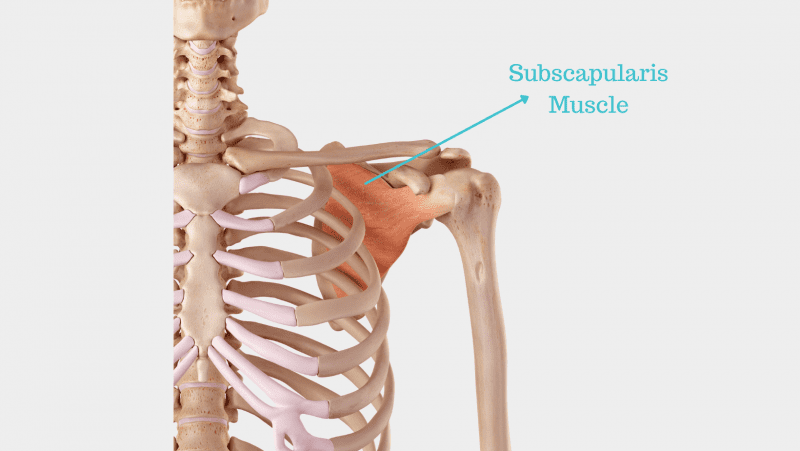
What causes Subscapularis pain?
Subscapularis tendinopathy
Pain in the subscapularis muscle is generally due to overuse or trauma. Repetitive actions are generally responsible for symptoms onset, such as consistent bowling in cricket or serving in tennis.
This generally leads to subscapularis tendinopathy, with pain and some degree of shoulder weakness, depending on how irritable your symptoms are. This condition is generally managed conservatively, with exercises that preferentially load the subscapularis muscle.
Subscapularis tear
Another common cause of subscapularis pain is a tear within the muscle or the tendon. This can have a traumatic origin, typically in the younger population, or a degenerative origin in older adults.
Symptoms tend to vary depending on the extent of the tear. Generally, pain and weakness are noticed with internal rotation and bringing your arm to your back. A graded exercise program should resolve the problem in the event of a small tear. However, an Orthopaedic consultation is warranted in a significant tear with likely compromise of shoulder stability.
Subscapularis Calcification
Lastly, calcification around the insertion area of the subscapularis muscle may be responsible for the symptoms. A calcification is a deposit of calcium that tends to affect people between the ages of 40 and 60; people with thyroid dysfunction and diabetes seem more predisposed.
The calcium deposit can impair mobility and functioning of the subscapularis tendon, with often high pain levels and disability. Treatment for this condition generally involves shockwave therapy, corticosteroid injection, or surgical removal of the calcific deposit as a last resort.
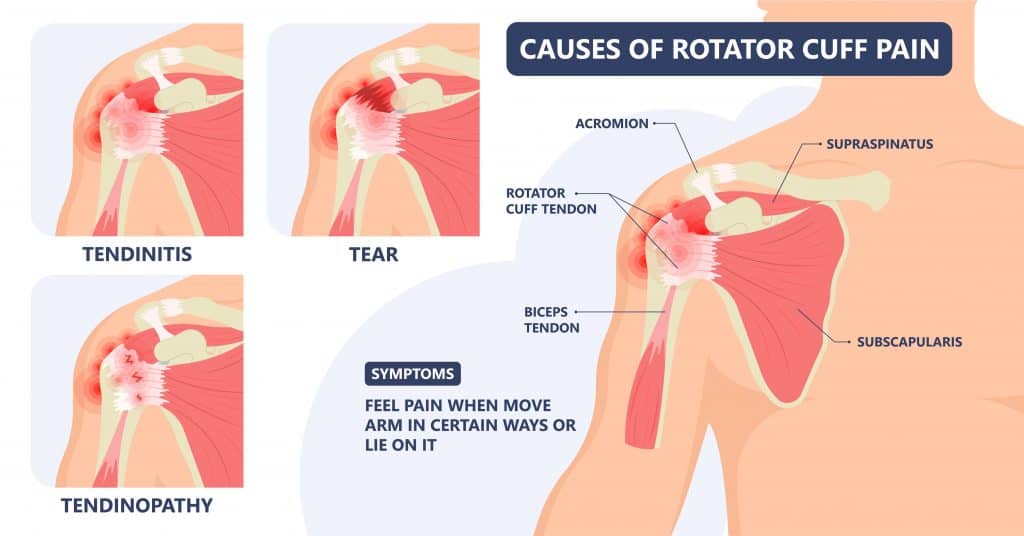
Best Subscapularis exercises
Resisted Internal Rotation with a band:
- Hold a resistance band to the side of your body with the elbow bent
- Keep the elbow close to your side and pull the hand across the body
- Slowly release the hand away from the body
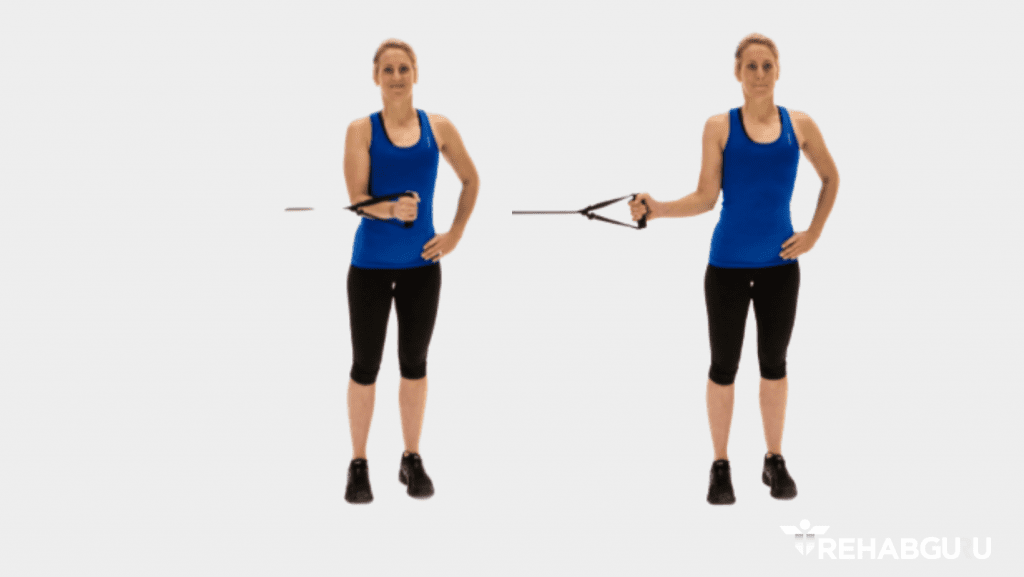
Shoulder Flexion Against Resisted Internal Rotation
- Hold a band in your hand, with the other end attached beside you
- Bend the elbow to generate tension on the resistance band
- Raise the arm forward, keeping the elbow bent
- Slowly lower the arm down, keeping your elbow bent, with a good shoulder position
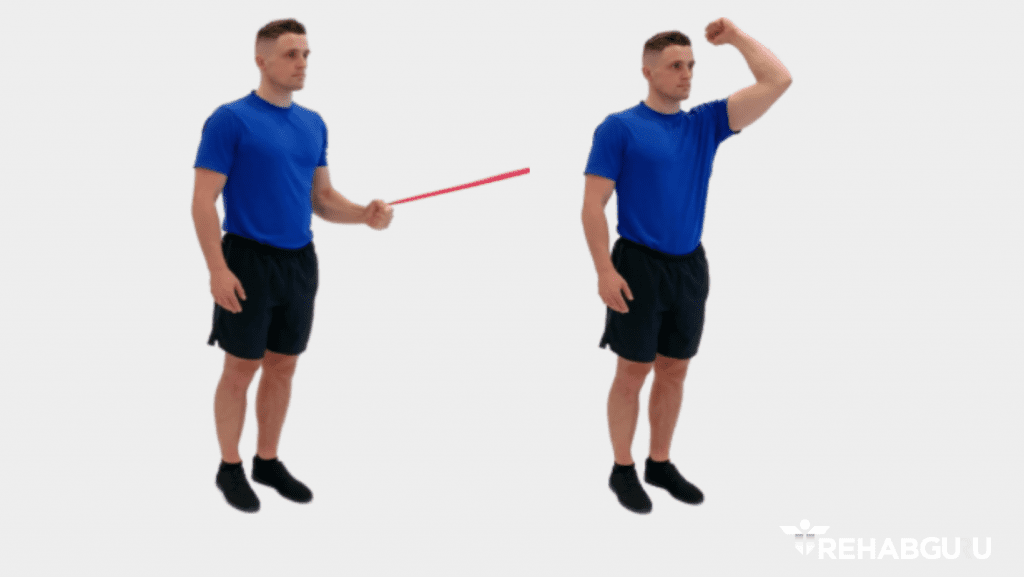
Isometric Subscapularis Exercise
- Bend your elbow, then rotate your arm towards you
- Place the other hand over the wrist to resist movement of the wrist to the stomach
- Apply a firm pressure that you can tolerate for the time prescribed
- Relax the arm
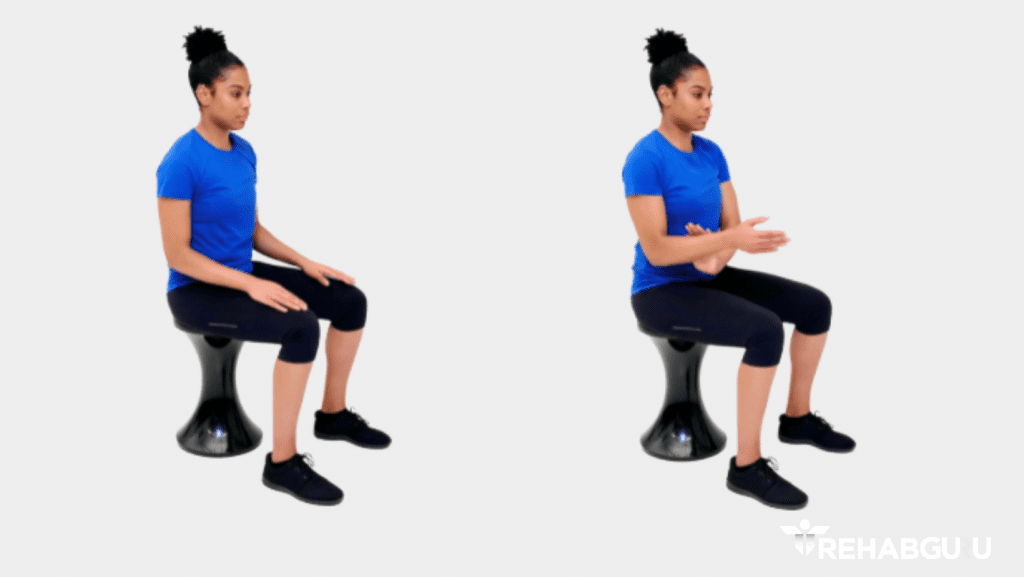
_______________________________________________________________________
Related Articles:
Shoulder Pain Diagnosis Chart – Shoulder Labral Tear – Biceps Tendinopathy
We are specialists in treating shoulder conditions such as Subscapularis Tears, and you can see one of our Sports Injury Physios in our clinic in Fulham, South West London.
